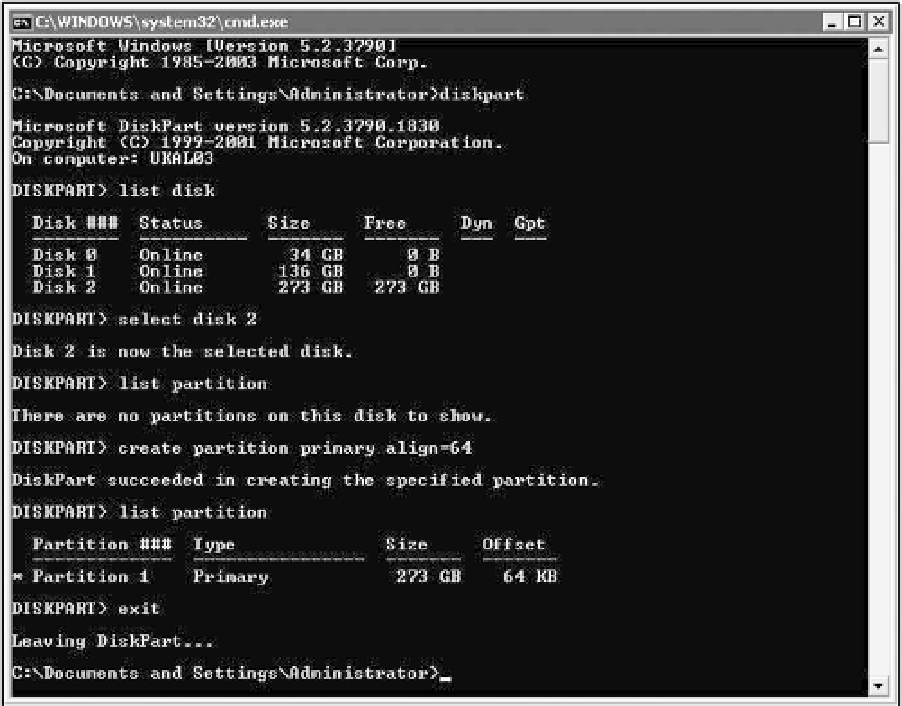Databases Reference
In-Depth Information
is Diskpart (note the extra
t
). The main difference between the two methods is that you specify the
alignment value in blocks using Diskpar and in KB using Diskpart.
Figure 6-8 is a screenshot of a command prompt window where I created a new partition aligned to 64 KB
using diskpart in Windows Server 2003.
Figure 6-8
Best Practice
You should get the optimal alignment value from your array vendor but in the absence
of that information Microsoft has traditionally recommended aligning to 64 KB.
However, Windows Vista and Windows Server 2008 automatically align partitions to
1024 KB (for volumes over 4 GB) to optimize for pretty much any stripe size so it might
be worth taking that approach also.
Type of Volume
Fundamentally a volume is a logical abstraction of a disk partition. When you format a drive it's the vol-
ume that you're formatting and there are two types to choose from. A
basic volume
provides a simple and
efficient storage solution that's been around for years.
Dynamic volumes
were introduced with Windows
2000 and enable additional features like spanned and extendable volumes and software driven RAID.
















Search WWH ::

Custom Search